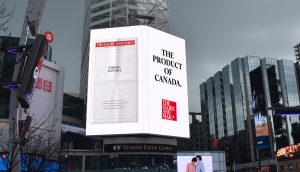U.S. brands are no longer the global brand leaders amongst teens, and a new echelon of world brands – including Sony, Nokia, and Adidas – are taking over. So says the new GenWorld study from Energy BBDO of Chicago, a survey of the attitudes, preferences, and outlook for the future of teens in 13 countries. In fact, 62% of teens around the world are downright apathetic about brands and no longer view them as status symbols. The top 10 global brands amongst teens are, in order of preference: Sony, Nokia, Adidas, Nike, Colgate, Nestlé, Cadbury, Coca-Cola, M&Ms, and Kodak. U.S. brands such as Coca-Cola, McDonald’s, and Disney still have worldwide brand awareness but amongst teens, that doesn’t necessarily equate to popularity. The report interprets this to imply that, ‘Plastering a brand logo everywhere doesn’t guarantee a connection and in fact may have the opposite effect. Whispering, rather than shouting louder than the competition may do more to earn this generation’s respect.’
Instead of just striving to stand out, the report suggests that brands must seek to stand for something important and give teens something to care about by having a cause, mission, or difference-making purpose in the world. Teen values have also undergone change. They have moved on from the edgy, gritty urbanism that coloured the last decade of teens to more conservative, traditional values and expectations. Religion and living to high moral standards is an expectation of nearly 60% of U.S. teens and one-third of teens globally. Expectations of marriage and parenthood are also high: 83% and 74% in the U.S.; 58% and 52% globally. Companies marketing to American teens could find that brand messaging around familiar teen themes of cynicism, irony, and sexuality will fall flat amongst this very large group of traditional teens. Around the world, technology is a fact of life for teens and there are no ‘new media.’ They know how to leverage new technology to benefit their everyday lives. The report concludes that it’s time for the brands that want to reach this group to follow suit.

















